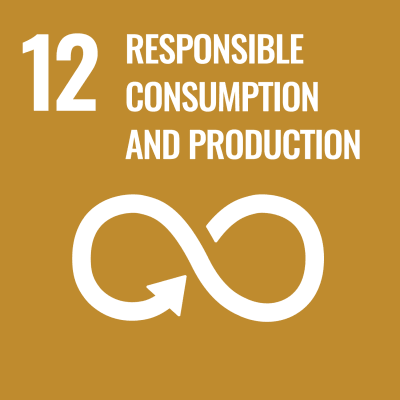-
Faculty of Science, Department of Chemistry
- Professor
- Makoto SAKAI
- Research Field
Laser spectroscopy, Molecular spectroscopy, Microscopy
- Keyword(s)
IR super-resolution, Picosecond laser
- Research theme
-
- IR super-resolution microscopy for biological samples
- IR super-resolution molecular imaging
- Molecular orientation imaging
- Chirality mapping
Outline of research activities

Microscopes are very important tools for studying biological samples. However, most of the microscopes cannot measure the vibrational molecular imaging based on molecular information. At the moment, only two microscopes are measureable. One is the Raman microscope, and the other is IR microscope, those are complementary relations. But these are not perfect. Especially, the IR microscope has very low spatial resolution about 10 µm, because of the diffraction limit by the IR wavelength. This is a serious problem for a microscope. To solve this problem, we have developed IR super-resolution microscope with a sub-micrometer spatial resolution by using vibrational sum-frequency generation (VSFG) detection, and have reported the applications to various biological samples such as human hair, avian feather, living cells and so on. By using this microscope, we can observe not only the vibrational molecular image with high spatial resolution but also the molecular orientation and chirality images.

- Desired cooperation
-
- Functional inorganic/organic materials
- Biological molecules such as protein, sugar, lipid, cell etc.
-
Faculty of Science, Department of Chemistry
- Professor
- Masanori YAMADA
- Research Field
Biopolymer
- Keyword(s)
DNA, Environmental material, Enegry material. Bioplastic
- Research theme
-
- Removal of harmful compounds by DNA
- Preparation of environmental material consisting of biopolymer
- Utilization of biopolymer as anhydrous proton conductors
- Preparation of bioplastics consisting of sustainable materials
Outline of research activities





Salmon milt, defatted soybeans, crab and shrimp shells, and cowhide have been discarded as an industrial waste around the world. Therefore, DNA, soy protein, chitin/chitosan, and collagen, which are obtained from these materials, are sustainable resources. Our research using sustainable resources is as follows; 1) removal of harmful organic compounds; 2) selective accumulation of metal ion; 3) development of anhydrous proton conducting material; and 4) development of bioplastic with the biodegradable property.

- Desired cooperation
-
- Development of environmental material
- Development of anhydrous proton conducting material using biopolymer
-
Faculty of Science, Department of Chemistry
- Professor
- Minoru MITSUMI
- Research Field
Coordination chemistry, Solid-state chemistry
- Keyword(s)
Visible light-driven redox catalysis, Photocatalytic H2 production, Photocatalytic CO2 reduction, Porous coordination polymers, Porphyrin chemistry, Mixed-valence complexes, Magnetic, dielectric and conductive materials
- Research theme
-
- Visible-light-driven redox catalysts for photocatalytic H2 production and CO2 reduction
- Multi-functional materials based on coordination polymers with redox-active bridging ligands
- One-dimensional d-electronic metals based on partially oxidized one-dimensional dinuclear platinum complexes
Outline of research activities


Metal complexes can exhibit functions and physical properties not achieved by organic or inorganic compounds alone by appropriately selecting the central metal ion and designing the organic π-electron ligands surrounding it. The characteristics of these complexes enable effective sunlight harvesting and various catalytic reactions utilizing its energy. In our laboratory, we are developing visible light-driven redox catalysts for photocatalytic H2 production and CO2 reduction using metal-porphyrin complexes, which can harvest visible light and catalyze various reactions. In research on functions and physical properties, we are developing coordination polymers with unique magnetic and dielectric properties based on mixed-valence states using redox-active ligands. Furthermore, we are developing one-dimensional d-electroninc metals based on partially oxidized one-dimensional dinuclear platinum complexes that exhibit stable metallic states at low temperatures.
- Desired cooperation
-
- Visible light-driven redox catalysis based on metal complexes for photocatalytic H2 production and CO2 reduction
- Metal complexes in general
-
Faculty of Science, Department of Chemistry
- Professor
- Takashi YOKOYAMA
- Research Field
Analytical chemistry, Separation science, Environmental analysis
- Keyword(s)
Flow analysis, Separation material, Analytical reagent, Chromatography
- Research theme
-
- Development of new selective analytical methods using flow injection analysis (FIA)
- Development of new separation and analytical methods using liquid chromatography (LC)
- Separation and analysis of dissolved organic compounds in natural waters
- Development of new separation materials
Outline of research activities


On the basis of FIA and LC in analytical methods using a liquid flow as much as possible to concern for the environment, we have studied to develop separation materials using carbon microparticles, analytical reagents specifically reacting with organic compounds, separation and analytical methods of dissolved organic compounds and bacteria in natural waters, a nano-LC which can separate and analyze an analyte in a sample volume of 1/1000000000 liters using a liquid flow volume of 1/1000000 liters, and separation and analytical methods using a self-reaction of sugars and amino acids.

- Desired cooperation
-
- Development of analytical methods using FIA
- Development of separation and analytical methods using LC
- Development of analytical methods for natural water samples
- Development of automatically analytical methods
-
Faculty of Science, Department of Chemistry
- Professor
- Tetsuo IWANAGA
- Research Field
Physical Organic Chemistry
- Keyword(s)
Organic Synthesis, Organic Fucntional Materials
- Research theme
-
- Synthesis and Properties of Novel pi-Electron Systems
- Synthesis of Donor/Acceptor Arrays Based on Aromatic Bisimides
- Development of Organic Photovoltaic Cell Materials
Outline of research activities


Developing efficient organic photovoltaic cell devices have been increasingly important in the growing needs for inexpensive renewable energy. The molecular designs for organic photovoltaic materials required delocalized pi-electron systems and utility elements. To develop novel pi-electron systems for organic photovoltaic materials, we synthesized some novel donor/acceptor arrays with aromatic bisimide units, and measured their properties and self-assembly abilities. Recently, we also synthesized some N-atom containing pi-electron systems and revealed their photophysical properties and structures.

- Desired cooperation
-
- Development of OPVC and OFET Materials.
- New Type of Organic Synthesis
-
Faculty of Science, Department of Chemistry
- Professor
- Yasushi SATO
- Research Field
Solid-state chemistry, Materials science, Inorganic materials
- Keyword(s)
Phosphors, Oxides, High-pure synthesis, Water-soluble metal complexes
- Research theme
-
- Exploration and functionalization of perovskite-type phosphors
- Development of new silicate phosphors excited by blue light
- High-pure synthesis of inorganic materials
- Development of water-soluble metal complexes
Outline of research activities(Summary of our study)
The central goal of our group is to develop the new synthesis method of inorganic materials using water-soluble complexes and to search a new functional inorganic materials such as phosphors and transparent conducting materials, superconducting materials and so on.(Main topics: Development of new phosphors)
Main topics of our study is development of new phosphors activated by blue and near-UV lights. Recently, we have reported new deep red-emitting oxide phosphors activated by blue light. We also investigate high functionalization of new host-excited phosphors based on functional oxides contained metal ions with s0 electron configuration.

- Desired cooperation
-
- Development of new photo-ceramics such as phosphors
- Improvement of photoluminescence propertites for phosphors
- Synthesis of high-pure ceramic materials
- Developments of water-soluble metal complex for the synthesis of ceramic materials
-
Faculty of Science, Department of Chemistry
- Associate professor
- Kan WAKAMATSU
- Research Field
Organic Chemistry, Photochemistry, Computational Chemistry
- Keyword(s)
Functional Material, Photoreaction, Electron Transfer, Quantum Chemical Calculation
- Research theme
-
- Development of new photoreaction using photoinduced electron transfer and its application
- Quantum chemical investigation of physical properties and reactivities of functional organic molecules
Outline of research activities


Our research theme is development of new photoreaction using photoinduced electron transfer and its application to syntheses of functional materials. In present, we are working on (1) investigation of photochemical syntheses of indole derivatives which are considered to the important alkaloids widely found in nature, and (2) development of efficient photochemical synthetic methods for quinone imine dyes and their application. Because these target compounds indicate characteristic redox behavior, we also consider applying them to functional materials such as an OLED material while adopting their expected physical properties evaluated by quantum chemical calculation.

- Desired cooperation
-
- Development of organic compound which functionality can be induced by photoreaction
- Quantum chemical derivation of physical properties and reactivities of functional organic molecules
-
Faculty of Science, Department of Chemistry
- Associate professor
- Noboru OSAKA
- Research Field
Structure and dynamics of polymeric materials (solution, gel, elastomer, plastic)
- Keyword(s)
physical chemistry, hierarchical structure, various scattering methods
- Research theme
-
- Mechanical improvement and functional expression of polymeric materials by structure control
- Investigation on microscopic interaction between polymers and solvents
Outline of research activities



The kinds of polymers are relatively a few, which are used as plastics, rubber, and gels for daily life, since they exhibit versatile properties by hierarchical structure control ranging from nano- to micro-meter scales. In our laboratory, we focus to develop new polymeric materials by the hierarchical structure control and reveal the relationship between the mechanism and structure by microscope, scattering, and spectroscopy methods.

- Desired cooperation
-
- Development of new polymeric materials by structure control
- Investigation on relationship between structure and physical properties of polymer
-
Faculty of Science, Department of Chemistry
- Lecturer
- Daisuke KAWAMOTO
- Research Field
Analytical Chemistry, Inorganic Chemistry
- Keyword(s)
Spectroscopic Analysis, Solid-Liquid Interfacial Reaction,Electronic State Calculation
- Research theme
-
- Migration behavior of elements in hydrosphere
- Elucidation of mechanism of solid-liquid interfacial reaction
- Elucidation of driving force for adsorption of dissolved species
Outline of research activities



I’m working on migration behavior of elements in hydrosphere from a chemical view.
【Elucidation of mechanism of solid-liquid interfacial reaction】
One of the factors affecting migration behavior of elements in environment (especially in hydrosphere) is “adsorption of dissolved species on soil”. In recent years, it has been reported that various reactions to the adsorbed species occur. I’m trying to elucidate the mechanism of the reaction.【Elucidation of nature of dissolved species in hydrosphere】
The dissolved species in hydrosphere is complex because several dissolved species coexists. I’m trying to elucidate the nature of the complicated dissolved species with theoretical calculation.- Desired cooperation
-
- Characterization of compounds using XA spectroscopy
- Migration behavior of elements in hydrosphere
- Solid-liquid interfacial reaction
-
Faculty of Science, Department of Chemistry
- Assistant professor
- Hirona TAKAHASHI
- Research Field
Laser spectroscopy, Time-resolved spectroscopy
- Keyword(s)
Photochemistry, Transient absorption spectroscopy
- Research theme
-
- Biomimetic microstructure formed by self-spreading behavior of phospholipid molecular assembly
Outline of research activities

Transient absorption spectroscopy measures the changes in the absorbance of short-lived species generated by photo-irradiation, and gives us the information about dynamic processes in materials or chemical compounds. Rate constants are also determined by measuring time-profiles of the concentration of excited molecules.
By using this method, we can investigate molecular dynamics after photo-irradiation.
- Desired cooperation
-
- Molecular dynamics after photo-irradiation for samples











